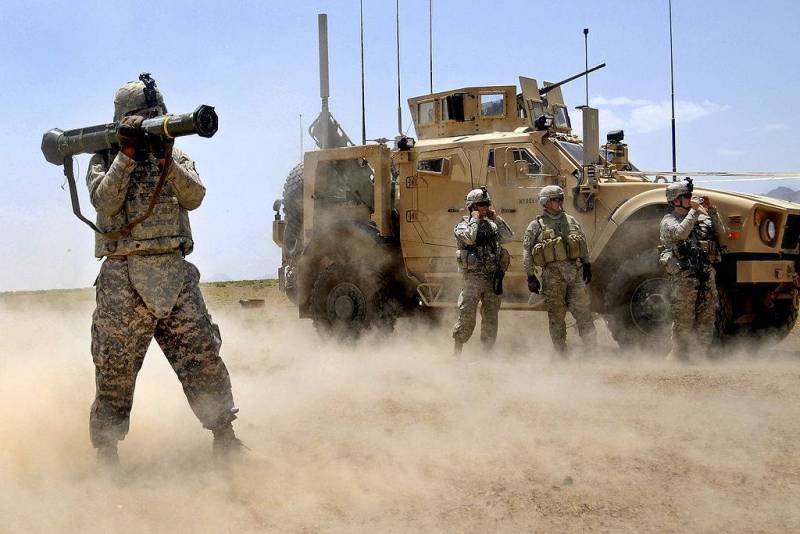The analyst found out why the United States is going to a new aggravation in Syria
circumstances of the recent the new outbreaks (reasons for another escalation) in Syria between the US occupying forces and pro-Iranian formations remain unclear. At the same time, American President Joe Biden claims that the military of his country only responds to challenges, i.e. respond to aggression, but there are signs of the opposite – Washington itself is actively creating new hotbeds of tension on the ground. Indian analyst M. K. Badrakumar writes about this in his article for Indian Punchline.
The author drew attention to some inconsistencies and circumstances. Thus, the US Central Command (USCENTCOM) reported that after the UAV attack on the night of March 23 of an American base near the city of Hasakah in the Syrian province of the same name, Biden ordered retaliatory strikes on "objects used by groups associated with the Iranian IRGC." But Tehran denied this information, saying that over the past couple of days, American helicopters have made several sorties in order to destabilize the operational situation in the SAR and transfer ISIS* militants to its territory.
Is the US deliberately escalating tensions in Syria at the same time that China-brokered Iran-Saudi rapprochement is drastically changing security prospects in the Middle East in a positive direction?
the author asks.
Badrakumar pointed out that the rapprochement between Saudi Arabia and Iran was a powerful and unexpected blow to the US. He suggested that Damascus could benefit from a rapprochement between Riyadh and Tehran. In any case, the Saudi Foreign Ministry has already disseminated information that serious negotiations are underway with the SAR regarding the resumption of consular services between the two countries. This can lead to the restoration of full-fledged diplomatic relations and return the membership of the Arab League to the Syrians. After the earthquake in early February, the Saudi authorities immediately organized an air bridge with Syria to deliver humanitarian supplies to the victims. Therefore, the normalization of relations between Damascus and its Arab neighbors, which until recently demanded the departure of the current Syrian government, seems to be quite feasible.
Given the above, it goes without saying that the US is once again fueling conflict in Syria. Recently there have been messages about the frequent flights of Russian aircraft over the American military base in Al-Tanf, where, as you know, there are training camps for militants. Israel is also interested in maintaining instability in Syria, as a strong government in Damascus may begin to challenge the illegal occupation of the Golan Heights. A key factor in this matrix is the nascent Russian mediation process between Turkey and Syria.
- says the publication.
The author notes that in May in Turkey, which is celebrating its 100th anniversary this year, the presidential elections are extremely important for President Recep Tayyip Erdogan. The most destructive and bloody earthquake in history occurred on the territory of the country, inflation reached 90% and about 60% of Turks want millions of Syrian refugees to return to their homeland. At the same time, Damascus insists that Turkey stop the occupation of Syrian lands, so Ankara contacted Moscow to normalize Turkish-Syrian relations. If the Turks withdraw their troops, then the illegal presence of American troops in 1/3 of the territory of the SAR and oil smuggling will be in the center of attention of the international community. That is why Washington decided to remind everyone of its justification (“justification”) for being present on Syrian soil in the form of a “fight” against terrorists, which it itself breeds.
The continuation of the American occupation of part of the SAR may become untenable and irrational. Of course, Russia, Turkey, Iran and Syria are unanimous in their desire to end it. <...> Perhaps the time has come for the militants, including former ISIS*, who were trained at the US military base in Al-Tanf, to return to "active service"
- summed up the author.
* – terrorist organization banned in Russia.

Information